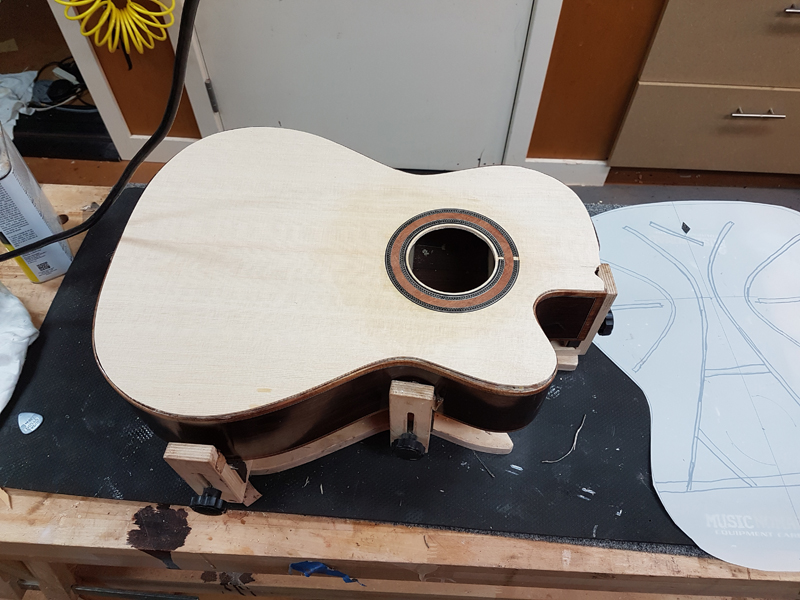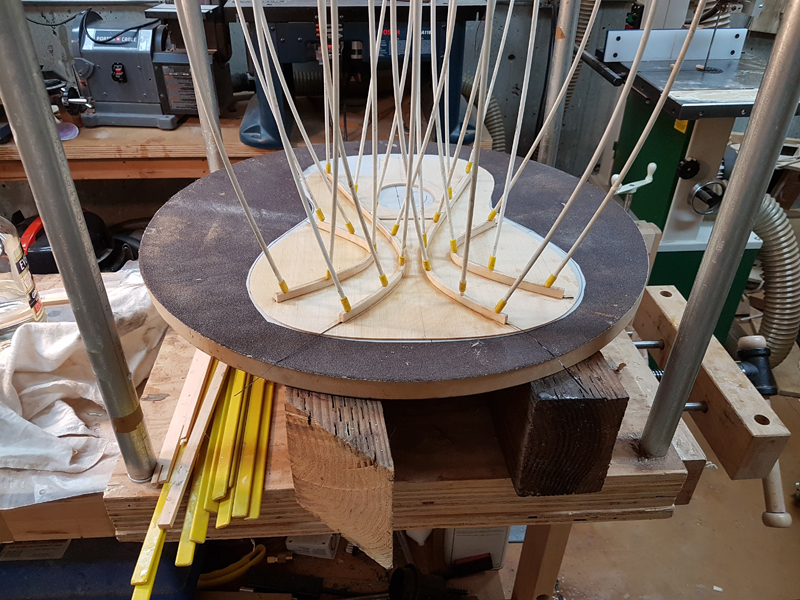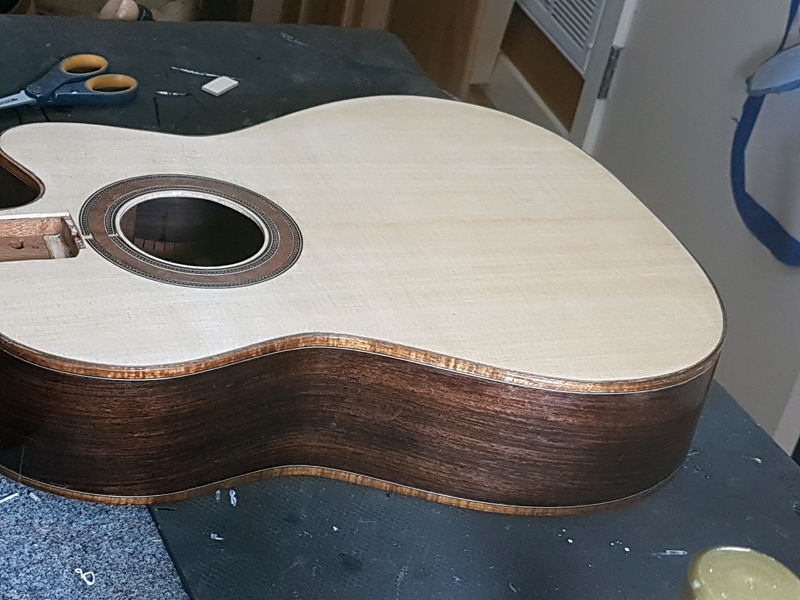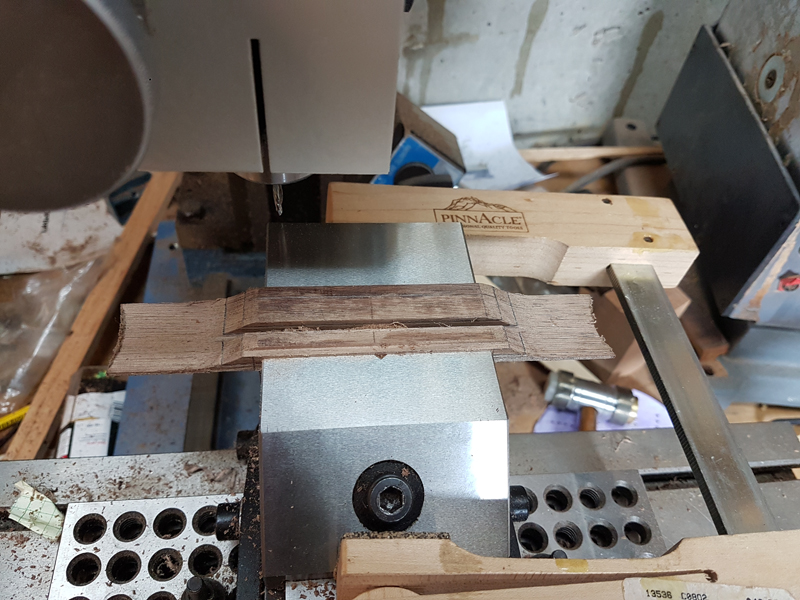I have not yet completed the re-top but I have got to the point where I think I can pull it off. The trick to the retop is to route new top to be the exact size to fit into the bindings of the guitar. Picture will show it best, but the basic idea is to mount the new top onto the old top spaced a bit from the top. A binding machine is then set to cut the top to the inside of the binding or binding and purfling line using the guitar itself as the index for the binding machine.
FIrst off I removed the bridge of the guitar and prepared jointed and loosely profiled the new top.


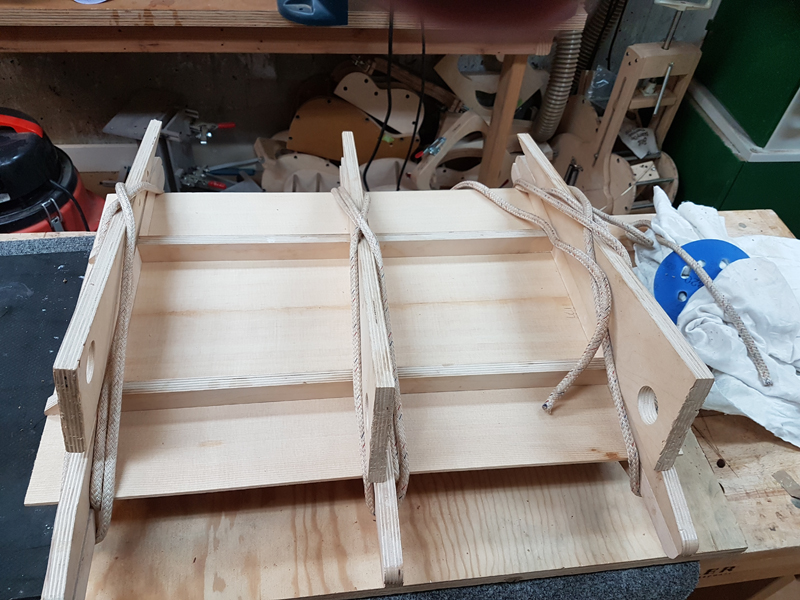

I used double stick tape to put down a bunch of spacers on the old top. I just cut up a bunch of the waste from the top.


I set the binding jig to just cut past the purflings, I used my test cut to check on the guitar. Then I routed the new top leaving the bindings alone



I cut the top out and used a bit of heat to loosen the glued down pieces.


The binding survived although I did pull a bit of the purfling when removing the top pieces for the linings I used heat to remove the rest of the purflings and will reinstall.
I made one of my classical wood ring rosettes, cheating a bit by installing premade rosette and routing out the center end grain tiles.
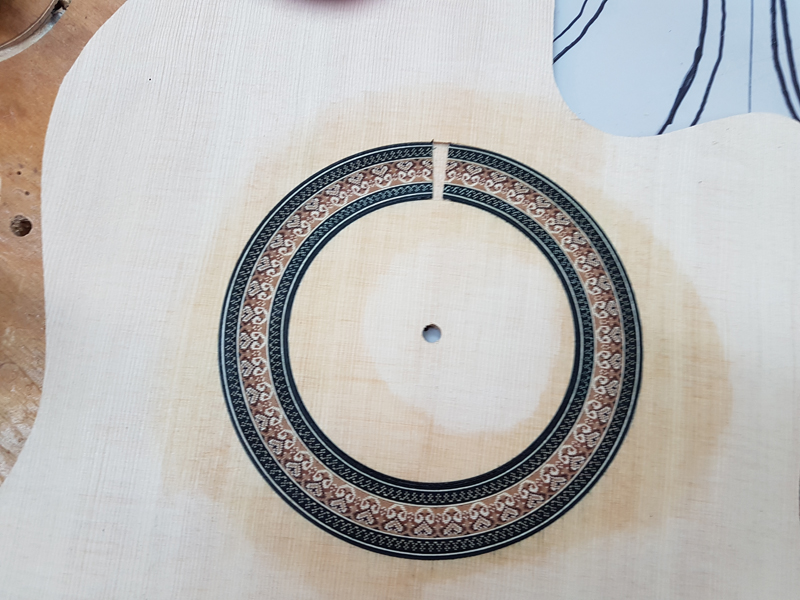



The new top fits right in, so I am ready to brace it using the experience I had gained on my last four classical falcate braced guitars.
